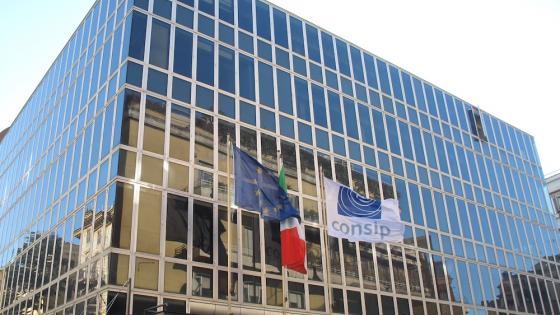Regulating the procurement of public goods – often with the goal of improving quality, timeliness, or managing costs – has been the subject of much policy and academic debate (Bosio et al. 2020, Bosio et al. 2021). However, one dimension of contracting has received little academic research, despite being crucial for structuring procurement contracts: the bundling – or unbundling – of the various components of a major project. A classic example is either bundling the ‘design-and-build’ components of an infrastructure project (where one contractor – often the builder – is responsible for procuring designs either in-house or through a subcontract) or unbundling these into ‘design-bid-build’ (where one contractor designs the product and then bids are solicited from contractors to build to that design). This distinction can have major implications for overall project quality, timeliness, and costs. However, research is scant: a recent NBER Handbook chapter on “Procurement Choices and Infrastructure Costs” found that “it is still not fully clear whether contracts that bundle the design-and-build phase outperform the traditional design-bid-build contract, where the two phases are procured separately” (Makovšek and Bridge 2021).
This distinction has important implications for another aspect of contracting: monitoring (studied in Pande and Olken 2012 and other recent work). Monitoring of outputs can have different impacts depending on whether contracts are bundled or unbundled (and vice versa). For example, under unbundled contracts, monitoring could have smaller benefits if strict regulation over the selection of each component provider incentivises the selection of high-quality firms that produce better outputs. Yet, if unbundling incentivises the selection of high-quality firms but does not incentivise high effort, then ex-post monitoring may be necessary to ensure adequate project quality. Meanwhile, unbundling contracts and conducting additional monitoring both incur administrative costs and possible delays. It is an open question which type of regulation would yield the greatest net social benefits for a given project.
Studying this problem is challenging in part because a single public works project rarely uses both bundled and unbundled contracting in a way that allows these structures to be directly compared. Yet, that was exactly the case for Kenya’s nationwide mass electrification project. Announced in 2015, the Last Mile Connectivity Project (LMCP) aimed to connect all Kenyan households to electricity by 2022 (Kenya Power 2015). While these ambitious goals were not met, there was significant progress: electricity access rates were reported to have increased from 25% in 2009 to 70% in 2019 (KNBS 2009, 2019).
The LMCP is representative of many public infrastructure projects: governments and multilateral organisations finance billions of dollars’ worth of contracts for large infrastructure projects every year. The World Bank alone, for example, financed more than 311,000 contracts with private sector contractors for the procurement of more than $185 billion in goods and services between 2000-2022. In a new study (Wolfram et al. 2023), we present novel evidence comparing the effect of different contract structures that governments and other funders can use, on the quality, cost and timeliness of construction.
The electricity grid in Kenya
There are around 60,000 electrical transformers across Kenya, owned and operated by Kenya Power, the country’s majority government-owned electric utility. Many are located in villages where very few households were connected to electricity at the start of the LMCP. Kenya Power (in consultation with the Ministry of Energy and members of parliament) selected 8,520 such transformers for Phase I the LMCP.
The objective of the LMCP was to connect all unconnected households located within 600 meters of an LMCP transformer by extending the local low voltage network. At most LMCP sites, between 20 and 100 unconnected households were eligible. Connecting all unconnected households in a village at the same time – referred to as ‘maximisation’ – was intended to generate cost efficiencies by leveraging economies of scale.
To complete construction at the 8,520 LMCP villages, Kenya Power awarded dozens of private sector contracts to procure goods and services. These contracts were financed, in large part, by the World Bank and the African Development Bank (AfDB): the AfDB financed the maximisation of 5,320 of the LMCP transformers and the World Bank financed the maximisation of 3,200. As can be seen in Panel A of Figure 1, World Bank and AfDB sites were both located across all of Kenya and were often quite close to one another. The research focuses on 36 constituencies located in five counties that contain significant overlap between World Bank and AfDB sites, framed in Panel B (constituencies are drawn in red).
Figure 1 Locations of Last Mile Connectivity Project villages across Kenya
Note: Panel A plots LMCP sites that were funded by the WB and AfDB Phase I across all of Kenya. Panel B zooms in on the sites in the five study counties (Kakamega, Kericho, Kisumu, Nandi, Vihiga). Panel C shows the random assignment to an audit treatment.
Two different procurement procedures
There were two key differences between the procedures that Kenya Power used at AfDB- and World Bank-funded sites. The first difference relates to contract structure. Contracts for AfDB-funded sites were bundled: a single contract included the design of the electricity network, materials, and installations. In contrast, World Bank-funded sites had separate unbundled contracts for designs, materials (including separate contracts for different types of materials), and installation. Table 1 describes the differences between the two approaches in greater detail.
The second difference is that the World Bank required Kenya Power to complete additional and more rigorous inspections. In other words, the AfDB paired bundled contracting with lower levels of monitoring, whereas the World Bank paired unbundled contracting with higher levels of monitoring. To separate the impacts of monitoring and bundling, we implemented a randomised controlled trial whereby contractors are notified that treatment sites will receive additional ex post monitoring. Panel C of Figure 1 shows which sites were in the treatment and control groups.
Collecting on-the-ground construction, household experience, and power quality data
The research team conducted dozens of qualitative interviews with senior leadership at Kenya Power, the World Bank, the AfDB, as well as some of the contracting companies, and analysed administrative data shared by Kenya Power. We also collected primary data at 380 LMCP villages (Panel B of Figure 1). By the end of surveying activities in July 2022, construction had been completed or there had been substantial construction progress at 250 of these sites. For these sites, surveying teams collected GPS and engineering quality measurements of the electricity grid, and conducted household surveys on connection cost, timing, and experience. Six hundred households at 150 sites furthermore agreed to plug in an nLine PowerWatch device. Each PowerWatch device measures voltage and power outages on a minute-by-minute basis, providing novel high resolution insights into the quality of a household’s electricity connection.
Results
The analysis of the data identified three main results:
- First, the flexibility afforded to contractors through bundled contracts generated several improvements at AfDB-funded sites. Households in AfDB villages are connected to electricity on average 16 months sooner than households in World Bank villages, and more poles and household connections were constructed at AfDB sites. The delay appears to be caused primarily by the increased bureaucratic requirements and poor coordination resulting from unbundled contracting used by the World Bank.
- Second, the unbundled contracting and inspections used at World Bank sites, while taking longer, did generate tangible benefits: on-the-ground construction quality is 0.6 standard deviations higher at World Bank sites than AfDB sites according to our summary measure of construction quality. This does not lead to any improvements in power quality in the short term, but these improvements are likely to improve grid longevity, lowering long-term maintenance and replacement costs.
- Across three different outcomes - quantity, voltage quality, and household installation quality - the randomised ex-post monitoring treatment improved construction quality at AfDB sites but not at World Bank sites. The impact of the experimental monitoring at AfDB sites but not at World Bank sites could be because Kenya Power already carried out an additional round of inspections at World Bank sites, or because the monitoring has more bite when conducted for bundled contractors.
Informing future infrastructure projects
When awarding large-scale public procurement contracts, which contracting approach is preferred? Evaluating the relative net benefits of the two approaches of course requires understanding their long- and short-term costs and benefits. On the one hand, World Bank procedures delayed the household connection date. On the other hand, by improving the quality of construction World Bank procedures will likely reduce long-term maintenance costs when compared with AfDB procedures. Neither method is necessarily a globally preferred option, and the optimal contracting structure will likely depend on the project’s goals and the government’s priorities (as well as its time discount rate). In many settings, combining contract bundling with more rigorous ex post audits could offer a way to increase quality at relatively low cost and with few delays.
When might a policymaker prefer different contracting structures?
Bundled (‘turn-key’, or ‘design-and-build’) contracting
- When policymakers are able to also implement stricter auditing, as this could improve quality at lower cost and with fewer delays than bundled contracts
- When policymakers have immediate needs or a shorter time horizon and thus want to prioritise timely completion
- When rapid technological progress, urbanisation or other trends reduce the value of the investment in the long run
- When policymakers have less information about the quality of local suppliers than the firms they may award turn-key contracts to
Unbundled (or ‘design-bid-build’) contracting
- When policymakers have a longer time horizon and want to prioritise infrastructure resilience
- When policymakers expect long-term maintenance and replacement costs to be a major concern in the future
- When policymakers expect reliability to matter a lot for the future value of the infrastructure investment, for example, if they expect energy-intensive businesses to connect to the grid
References
Bosio, E, S Djankov, E Glaeser and A Shleifer (2020), “Corruption in public procurement”, VoxEU.org, 5 November.
Bosio, E, G Spagnolo, O Bandiera (2021), “Discretion, efficiency, and abuse in public procurement: A new eBook,” VoxEU.org, 30 November.
Kenya National Bureau of Statistics (2009), “Kenya Population and Housing Census”.
Kenya National Bureau of Statistics (2019), “Kenya Population and Housing Census”.
Kenya Power (2015), “Last Mile Connectivity”.
Makovšek, D and A Bridge (2021), “Procurement Choices and Infrastructure Costs,” in E Glaeser and J Poterba (eds), Economic Analysis and Infrastructure Development, NBER.
Pande, R and B Olken (2012), “Lifting the curtain on corruption in developing countries,” VoxEU.org, 21 January.
Rural Electrification Authority (2008), Strategic Plan 2008-2012.
Wolfram, C, E Miguel, E Hsu, S Berkouwer (2023), “Contracting structures in public procurement: Evidence from donor-funded Kenyan electrification,” NBER Working Paper No. 30948.








